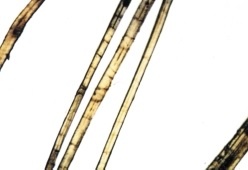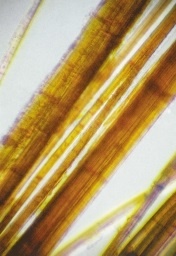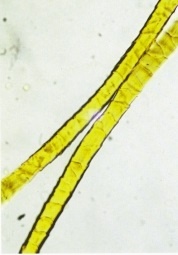© 2025 All rights reserved
Project by UsedTextilemachines.eu
Don't have an account yet? Sign in
Do you already have an account? Go to login Click here
Don't have an account yet? Sign in
Do you already have an account? Go to login Click here
Looking for the best opportunities to satisfy the customer:
Mobile Phone : +393319020189
Orari di lavoro : 09.30 / 12.30 - 16.00/18.00 Dal Lunedi' al Venerdi'.
Fiber is an element, which can be made up of materials of different nature, characterized by flexibility, fineness and a high ratio between length and diameter.
Textile fibers are obviously those fibers suitable for textile applications. They can be derived
directly from nature (natural textile fibres) or manufactured by man ('techno fibres'). The history of textile fibers is closely linked to that of man and the evolution of his existence.
people over the centuries.
In fact, textile production was born as a primitive craft that arose from man's need for
dressing to protect oneself from external elements and has subsequently expanded and diversified, equally
step with man's desire to improve his living conditions and with the development of the
aesthetic waxes. In the beginning, man made use of what was offered spontaneously by nature
(vegetable and animal fibres).
Only towards the end of the last century and especially with the beginning of the current one, characterized by a strong
scientific and technological progress, man, replacing nature and emulating it, discovers and pro-
duces “technofibres” to cope with continuous demographic growth and satisfy new and growing
scent needs of modern society.
Consumer needs essentially depend on three factors:
1. fashion;
2. the price;
3. the properties of use.
The blends of technofibres and natural fibers have the role of reconciling the wearing properties of the garments.
ditional natural fibers and the easy maintenance requirements characteristic of modern technofibres.
They are fibers taken from materials existing in nature and used through mechanical processing, but
without changing its structure. They are of plant, animal and mineral origin.
Between the vegetable fibres the most commonly used ones are:
Cotton (fig. 1).
It is the most widespread vegetable textile fiber in the world,
taken from the capsule of a bushy plant
(Gosypium). It has freshness characteristics
and resistance. Tends to shrink at first wash
Gio, is easily creased and is unsuitable for draping.
worse. Its quality is defined by color (grade
of whiteness), length (linden), fineness and robustness
stezza. Cotton is used in all fields
of clothing and furnishings, pure or in
melee.

Linen (fig. 2).
It is the oldest and most valuable natural fiber, taken from
book (cortical layer) of a herbaceous plant
(Linum usotatissimum). The fibrous part is obtained
by maceration of the bark of the plant
ta. This fiber has excellent hygroscopicity, fre-
shearness, wear resistance, toughness, durability. For the
its comfort and its freshness, linen is used
go into clothing, household linen
and in furnishings.

This fiber comes from the Cannabis book
sativa. It has high resistance, good absorption
benza, low elongation at break and creases
comes off easily. It resembles linen, compared to
which however is more rigid, rough and less shiny.
Being woody, this fiber is poorly suited to
draping and knitting. It's fiber
very appropriate for making ropes and
cordage.
Jute.
It is a fiber that is obtained from the book of some shrubs. It has very lignified cellulose: the artefacts
therefore they are coarse and rigid. It is widely used in the manufacture of packing bags and
of rustic and furnishing fabrics, but it is not very resistant and deteriorates easily if subjected to humidity.
Other plant fibers: ramie, sisal, coconut, broom, hibiscus.

It is the most widespread and important animal fiber and
It constitutes the fleece of various sheep breeds.
Its physical characteristics, i.e. fineness and length
age, are directly influenced by the period
shearing, the variety of breeds and the production
coming of the sheep. Quality is evaluated primarily
pally on the basis of length and fineness
and curls: the finer and curlier the fiber, the
the more valuable it is. Thanks to its particularity
structure has excellent qualities and properties,
such as hygroscopicity, strong thermal protection (insulation), elasticity, breathability, wear resistance
and to the flame. These characteristics change in relation to temperature and humidity. There
wool is used in all textile fields, pure or mixed with other fibres.
It is good to open a parenthesis on the meaning of the expressions "carded wool" and "combed wool".

After the sale of the machinery, we also assist you in logistics and, if desired by the customer, we have technicians capable of reassembling and starting up the machinery.
© 2025 All rights reserved
Project by UsedTextilemachines.eu
| Cookie | Durata | Descrizione |
|---|---|---|
| cookielawinfo-checkbox-analytics | 11 months | This cookie is set by the GDPR Cookie Consent plugin. The cookie is used to store the user consent for the cookies in the "Analytics" category. |
| cookielawinfo-checkbox-functional | 11 months | The cookie is set by GDPR cookie consent to record the user consent for the cookies in the category "Functional". |
| cookielawinfo-checkbox-necessary | 11 months | This cookie is set by the GDPR Cookie Consent plugin. The cookies is used to store the user consent for the cookies in the category "Necessary". |
| cookielawinfo-checkbox-others | 11 months | This cookie is set by the GDPR Cookie Consent plugin. The cookie is used to store the user consent for the cookies in the category "Other. |
| cookielawinfo-checkbox-performance | 11 months | This cookie is set by the GDPR Cookie Consent plugin. The cookie is used to store the user consent for the cookies in the "Performance" category. |
| viewed_cookie_policy | 11 months | The cookie is set by the GDPR Cookie Consent plugin and is used to store whether or not user has consented to the use of cookies. It does not store any personal data. |
Fill out the form to contact me